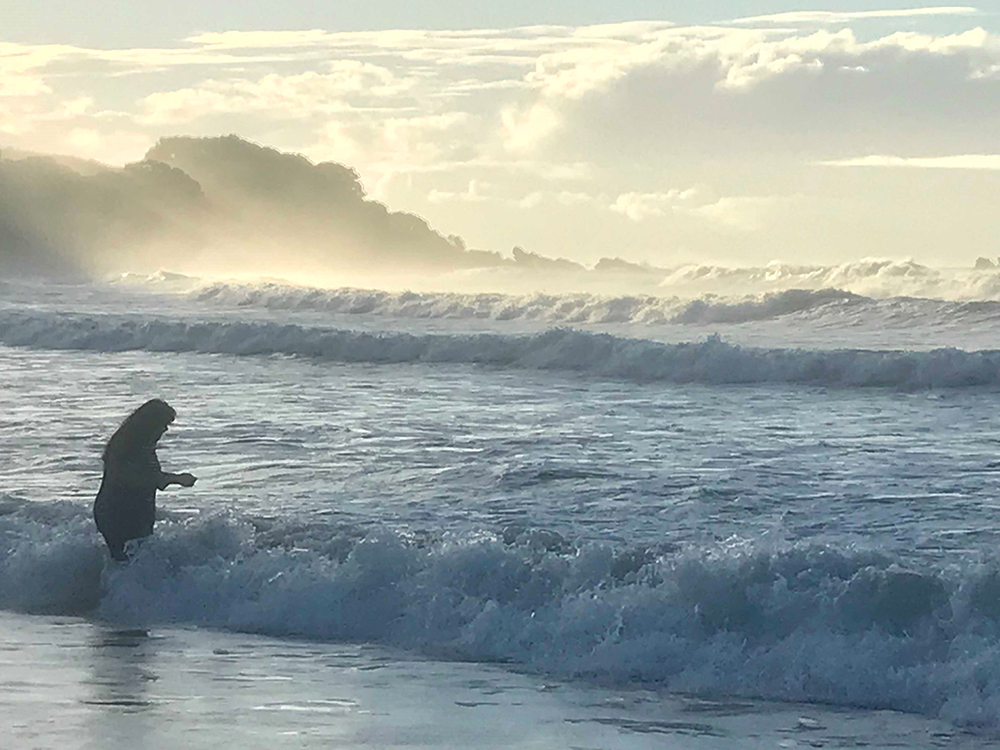With a surf swell expected to roll onto Bay of Plenty shores later this week, local surf life guards are expecting they will need to gear up alert levels as beachgoers seek the thrill of the waves.
Surf Life Saving New Zealand's Eastern Region lifesaving manager, Chaz Gibbons-Campbell says the conditions over the last week have been “pretty calm” but there is some swell on the horizon.
“The swell is forecasted to be in the range of knee to chest height, and that’s where we see most of our rescues,” says Chaz.
“People see that it’s not too big and reckon they can handle the conditions but often choose the wrong place to swim.
“Combined with an outgoing tide, particularly in the afternoon, with the swell increasing – that’s when we could get a lot of incidents.”
"All we ask is that people check the conditions, choose a lifeguarded beach and swim between the red and yellow flags!"
 Swim between the flags. Photo: Supplied.
Swim between the flags. Photo: Supplied.
He says the region’s surf lifesavers had rescued 56 people and assisted 62 more to safety between December 18 and January 2 at Coromandel, Bay of Plenty and Gisborne beaches.
“Most of them were around the Christmas period where we had that 1 - 1.5 metres of swell with a number of rescues outside the flagged area.”
He says after Christmas the sea conditions became a lot flatter.
“We expect this week coming to be similar conditions to what we had over Christmas so we're expecting to see more rescues.”
Overall he says lifeguards are “really pleased” with the public’s behaviour this summer, however "there is always room for improvement!"
“We have such a big stretch of coast between Mount and Papamoa, and only five sets of flags. There are big gaps between flag areas where people are swimming, and lifeguards are out talking to them, making sure they are on the sandbanks and not swimming in the rips.
“On hearing advice they are receptive which is encouraging for lifeguards, we just need people to continue to follow our advice and swim between the red and yellow flags."
“On a whole we’re pretty pleased with the public - they are taking on board the advice, but it’s important not to get complacent with the relaxed conditions we have been seeing as things can change pretty quickly.”
He says lifeguards have also been faced with many heat-related incidents where people have been finding themselves dizzy or exhausted, in particular on Mauao.
“They’re not keeping themselves hydrated or prepared for a climb up Mauao,” says Chaz.
“There are lots of little things like rolled ankles and people slipping on the gravel. People need to use a bit of caution, have a water bottle with them, and dress for the occasion - don't wear jeans and a hoodie! And have some form of communication with you like a mobile phone."
(1).jpg) Mauao rescue markers show numbers which relate to a location making it easier for rescuers to find people who are injured. Photo: Supplied.
Mauao rescue markers show numbers which relate to a location making it easier for rescuers to find people who are injured. Photo: Supplied.
Chaz says a trio of lifeguards nicknamed 'the three musketeers' recently responded to an incident up Mauao where a person was reported to be having difficulty breathing.
“Lifeguards responded but were unable to locate the person due to the lack of information provided by the informant,” says Chaz.
“On the way back down they came across another person who was suffering from heat exhaustion. After providing some first aid treatment the person was able to make their own way back down Mauao.”
On Mauao, rescue markers are available for people to use to provide location information to rescuers if they are needing help.
Chaz says these are really important when reporting an emergency.
“People should find the nearest marker to report their position and remain with the person in distress until help arrives.”
Back down on the beach, using common sense for the weather conditions is recommended.
“Heat is a big thing. Stay hydrated.”
With the Bay of Plenty surf beaches a magnet for swimmers, surf life guards’ vigilance and expertise will continue to play a crucial role in safeguarding the community against the exhilarating but potentially perilous force of the incoming swell.
“Always choose a lifeguarded beach and swim between the red and yellow flags. You can find the nearest one by visiting safeswim.org.nz - this site will also display any hazards for the day ,” says Chaz.



0 comments
Leave a Comment
You must be logged in to make a comment.